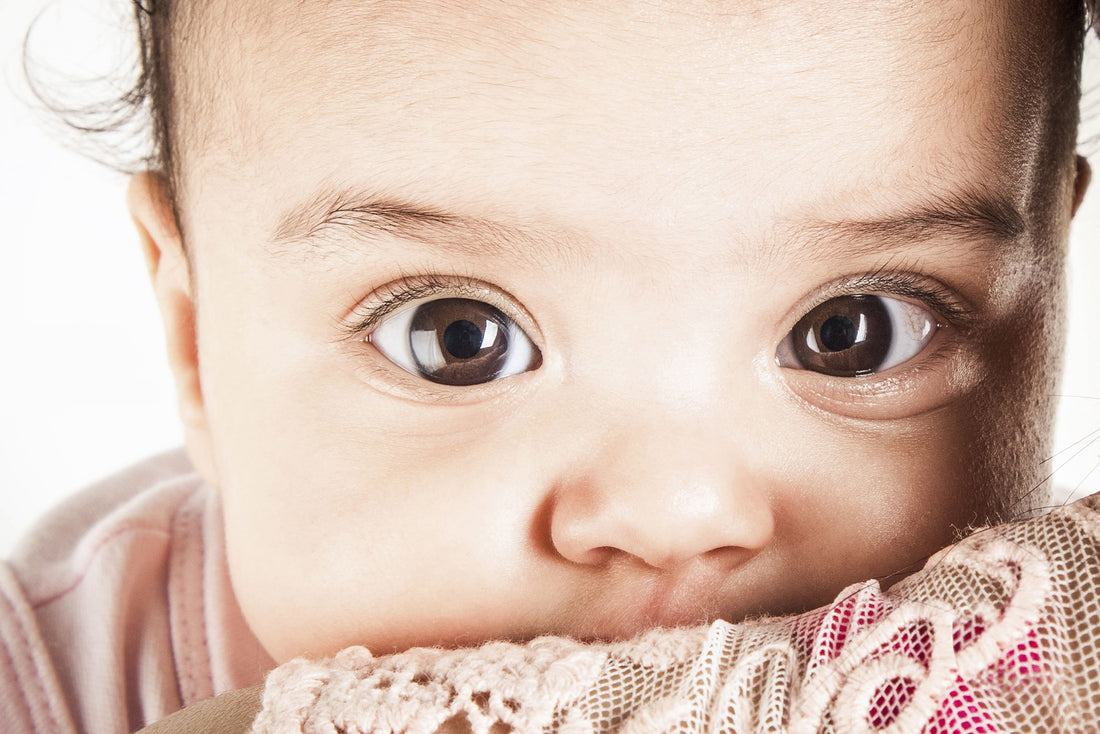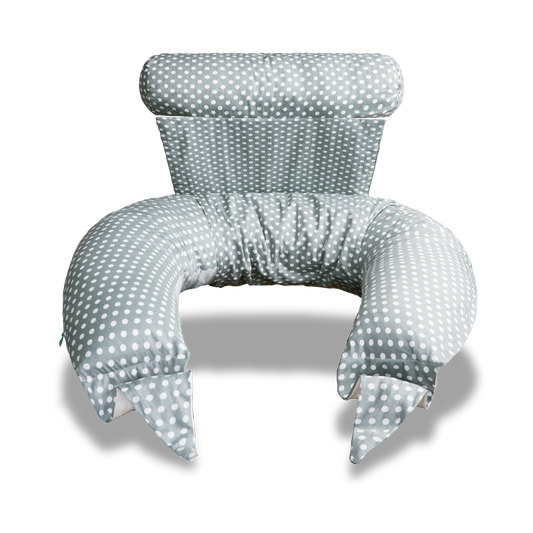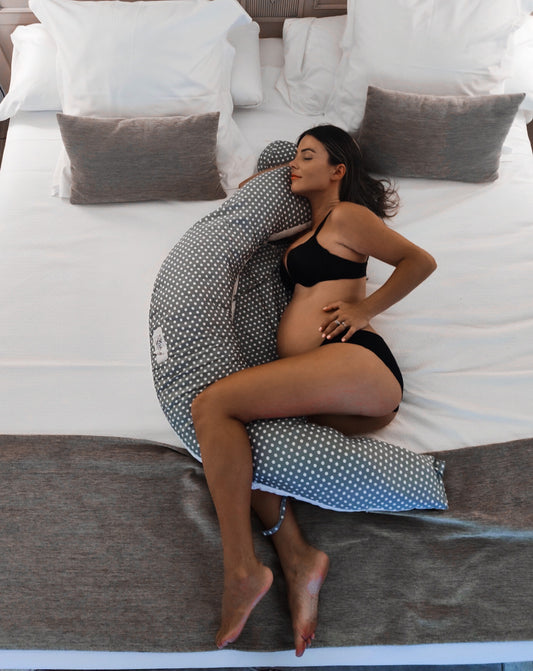Your baby is due soon and you’re eager to find out who he or she will look like. One of the things you wonder is about infant eye colour and what colour eyes they will have.
Like any genetic trait, we can never be 100% sure, but we can certainly get a good idea of the odds with our baby eye colour predictor!
Read on to discover what colour eyes your baby will most likely have.
What determines a child’s eye colour?
Eye colour is a polygenic, not a monogenic trait. What does this mean? That it’s determined by several genes and not just one.
Most of us carry more than one gene, and not just the one we manifest physically. For example, I may have brown eyes, but one of my parents has blue eyes, so I also carry the blue eye gene.
Genes can be dominant and recessive, with the dominant gene prevailing over the recessive in genetic transmission. In the case of our eyes, dark eyes prevail over light eyes. Brown eyes are therefore dominant, while blue, green, or grey eyes are recessive. That’s why they are rarer!
Does this mean that if either parent has dark eyes, their child will automatically have dark eyes? No, not necessarily! The situation is more complex because it never depends only on the colour of the parents' eyes but also on the recessive genes they pass on. That’s why, in order to have a precise idea of baby eye colour, you have to include in your baby eye colour calculator the eye colour of both grandparents!
Baby genetic eye colour chart

As we mentioned above, genetic transmission is a complex matter, and in this baby eye colour chart we find a simplified version which refers only to dark and light coloured eyes. In fact, it isn’t possible to consider all the countless variations in eye colour (for example, newborn eye color grey), which can be lighter or darker, warmer toned or cooler toned. For instance, if a child has blue eyes, they may be a different shade of blue from his mum or dad’s eyes (whoever he inherited them from).
Both parents carry a pair of genes for eye colour: one is the actual colour of their eyes and the other is a gene they carry. Therefore, their children have four possible gene combinations.
Even if you both have brown eyes, you may have a parent with blue eyes and therefore carry recessive blue-eye genes. If the recessive genes combine, the child will have blue eyes. Let us look at this in more detail.
Brown-eyed parents and brown-eyed grandparents
If mum and dad have dark eyes and only carry the dark-eye gene (if neither grandparents, siblings nor cousins have light eyes), then the child will have dark eyes.
Brown-eyed parents and light-eyed grandparents
If mum and dad have dark eyes but both carry the light-eyed gene, there is a 1 in 4 chance that the child will have blue eyes.
If, on the other hand, only one of the parents carries the light-eye gene, there’s a very high probability that the child will have dark eyes.
To clarify further, here’s a diagram which explains the combination of genes in these two specific situations:


Parents have light-coloured eyes
If both mum and dad have light-coloured eyes, they both only carry the light-eye gene (it’s not genetically possible otherwise), then their child will have light-coloured eyes.
One parent has light eyes, one has dark eyes
There are two possibilities. If the dark-eyed parent also carries the light-eye gene (i.e., one of their parents has light-coloured eyes), then the child has an equal chance of inheriting light or dark eyes (50%).
If, on the other hand, the dark-eyed parent is the child of dark-eyed parents and, therefore, doesn’t carry the recessive light-eyed gene, it’s 90% likely that the child will have dark eyes.

When does baby eye colour change?
When do infants get their eye colour? As you may know, you’ll have to wait until a few months after the birth to know what colour eyes your baby will have.
Newborn eyes change colour, and their eye colour is only defined around 6 months old, sometimes even later, at around 12 months old.
Therefore, answering your question of “when do infant eyes change color?”, you just have to be patient!
All babies tend to be born with light-coloured eyes which then darken as they grow.
One new born eye colour study, which followed the eye colour change during the first two years of life, showed that babies who are born with darker brownish eyes are unlikely to change colour. On the contrary, blue-eyed infants are more likely to turn brown-eyed.








